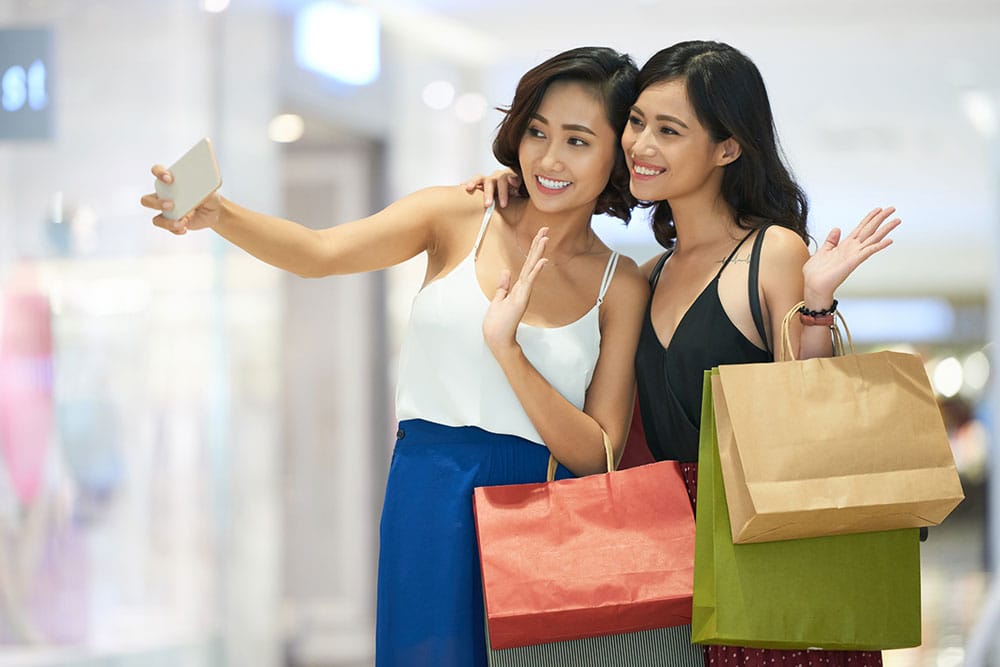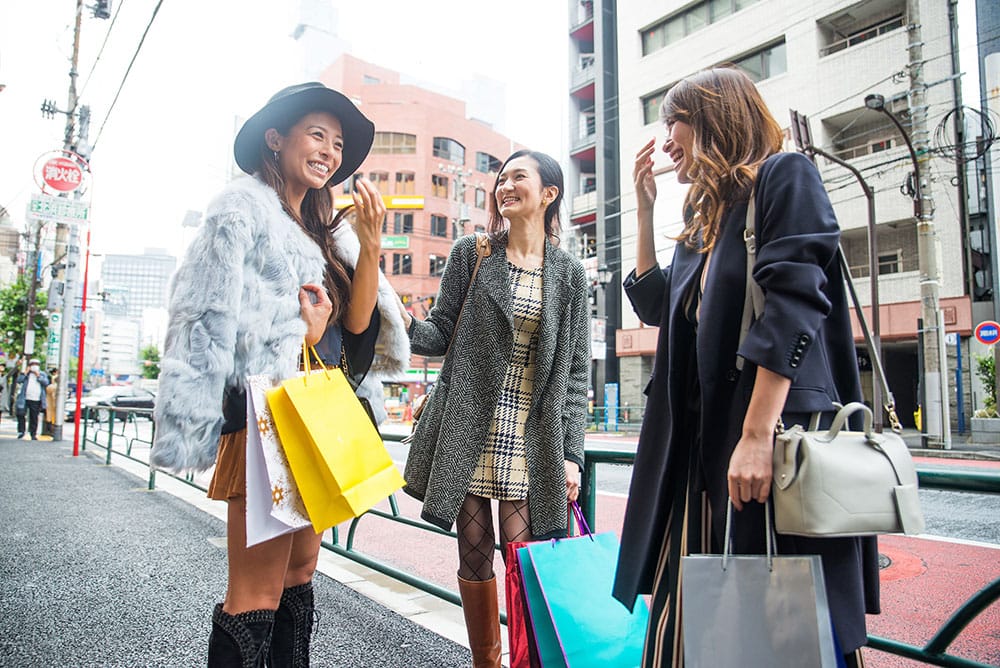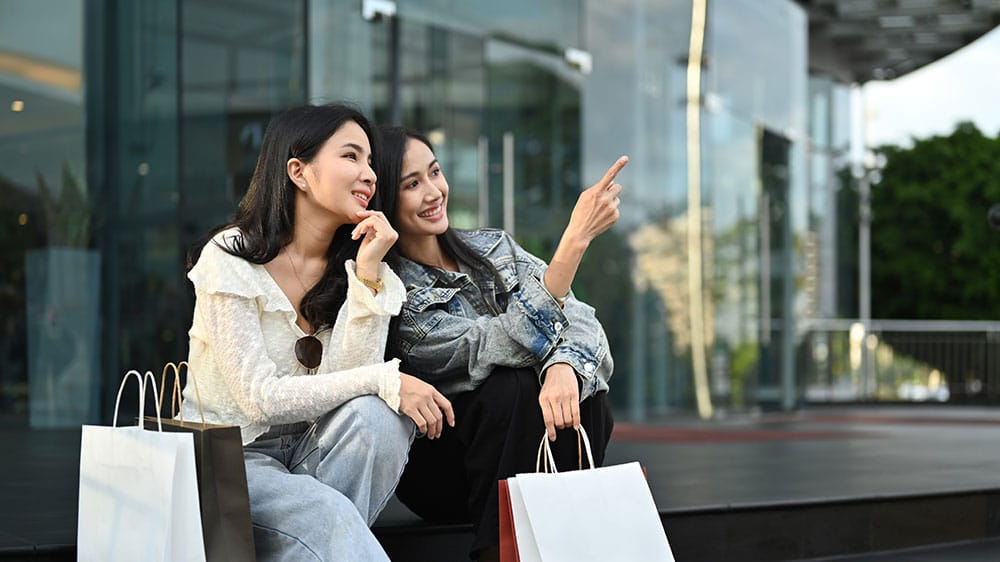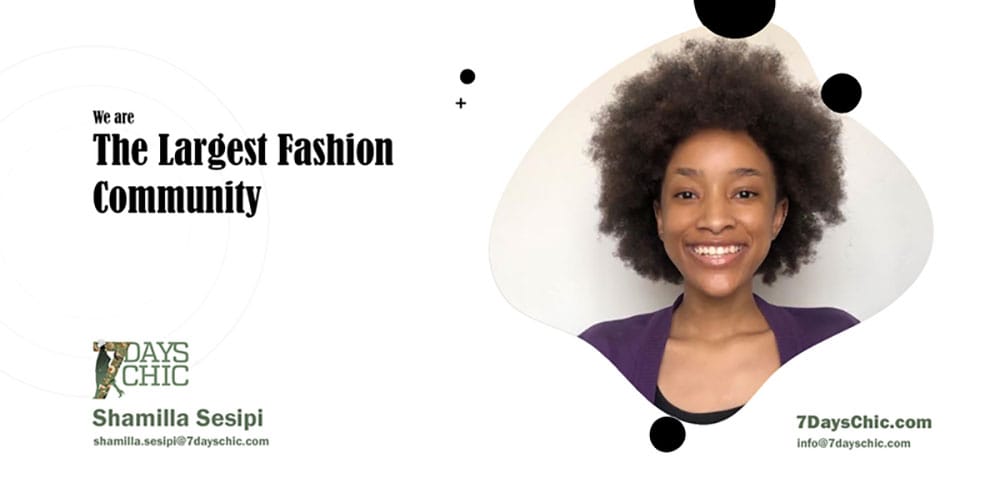1. Introduction
We live in a world that is always evolving, so it’s only natural that designers and consumers are now forming a connection. In the marketing industry, marketers are constantly trying to gather information about consumer’s preferences and the data they engage with. Despite new technology, we have found that the most fruitful way to bridge this app with a more personalized and interactive experience – their already existing connection to modelling!
Let’s begin by discussing this connection through runway versus retail. Retail fashion is affordable and accessible to the everyday consumer, however high fashion is typically more expensive because it is made with higher quality material and has intricate details. High fashion is also more exclusive as if not as accessible as retail fashion. This exclusivity includes limited edition pieces and designer collaborations. The marketing strategies between these two types of fashion are also very different. High fashion marketing focuses more on the exclusivity and prestige aspect to intrigue their consumers. Whereas, retail fashion marketing focuses more on their affordability and convenience thus accommodating a larger audience.
Fashion models influence purchasing decisions because they help consumers understand their fit and body shaping. But how exactly do they do that? Consumers have different body types so sometimes it’s hard to decipher what would be the correct fit for your body, so models bridge that gap by helping consumers understand how a garment would fit different figures. Seeing garments in a visual format would be easier to understand than in a verbal format. Models essentially assist the brand in communicating with their consumers and allow the consumer to interact with the garments. The consumer’s participation can help shape the brand’s value and identity.
2. The Role of Models in Fashion Marketing
Understanding fashion adoption involves knowing how people begin to follow trends over a certain period. It impacts how consumers act and make decisions. Fashion heavily impacts people’s decisions to try and purchase new items. Companies use marketing strategies such as ads, promotions, and celebrity endorsements to influence people from all socioeconomic backgrounds to follow the latest trends and purchase their products. However, their intention to influence consumers doesn’t always mean that consumers will indeed be influenced by their tactics. Which is why market research plays a crucial role in this process. Efficiently integrating your market research into your marketing strategies can guarantee a higher chance of success and better results, as well as exceed your consumer’s expectations.
Fashion models can embody the brand’s vision in many ways. Models are a visual representation of the brand’s design and aesthetic. They essentially bring the clothing pieces to life through style, mood and creativity. They are used as a tool to communicate the brand’s identity to their target audience, as well as align with the brand’s values and overall message. They tell a story through their poses, movement and expressions, which often align the brand’s campaign. This story can either be about elegance, boldness or inclusivity. Models can make the brand feel more relatable and appeal to a wider audience because they symbolize diversity, culture, or aspirations. Because models are the face of the brand, they are able to influence and encourage how the consumer feels about the products.

Why Do Consumers Trust Models as Tastemakers?
Let’s discuss the psychology behind it. The modeling industry isn’t easily accessible so naturally every individual that is part of that community is seen as a professional. These professionals often work closely with acclaimed designers and brands, thus giving them credibility to authorize what’s on trend. The consumers associate the model with the brand or designer because of its high reputation. Models make the products look more desirable which means they can influence the consumer to believe in their quality and style. Due to the popularity of social media, models tend to share exclusive content with their followers allowing them to form a connection and trust their future recommendations. By blending these different factors, models are able to establish themselves as credible sources of trends and style.
3. Runway Influence on Trends
Runway presentations play a pivotal role dictating seasonal trends because they are providing a glimpse into the future of fashion. Runway shows are used as a tool to showcase what the acclaimed designer has been working on. This creative vision includes themes, color palettes, fabrics, and silhouettes that determine the trends. Attendees of these prestigious events include fashion editors, buyers, and influencers who analyze the collections and share their opinions online, therefore spreading these trends to a larger audience. Popular trends that are seen on the runway tend to inspire what trends are seen in stores, eventually influencing consumers as well. This also influences fast fashion companies who replicate the clothing into more affordable versions for the everyday person.
There are several steps involved in the process of translating high-fashion trends into retail products. First we must do an analysis and forecast of trends. We need to closely analyze the themes, colors, fabrics, and styles portrayed throughout the show. Then specialists decide which of those elements will connect with consumers based on collected data. After a sufficient amount of market research – gathering information on consumer preferences, spending habits, and lifestyle needs and observing their competitors’ trend patterns – then we move on to design adaptation. This is the step where designers simplify and modify their designs to appeal to the consumer’s needs ,for example through different body types, climates, and everyday practicality. The product is then developed and finalized through mass production, ensuring that the final product is ready to hit the market. Once the product has been marketed through strategies such as social media, endorsements, merchandise, etc. ,then it will be launched. Throughout this period, the sales and progress will be monitored to determine the success of the product. The brand lastly receives feedback and reviews from consumers which will help with refining future collections.
Designers use models to communicate the vision of their collection. A model’s main purpose is to showcase how the garments will look on a person’s body. The model gives you a clearer understanding of the fit, functionality, and style of this garment. It is easier to influence the consumer when they can see the full potential of a clothing piece. Things such as makeup, hairstyles, and poses are tailored to enhance the story of this collection. Events including a diverse range of models can be a good reflection of the designer and brand because it reflects that inclusivity or challenging norms is a priority for them. Having models that clearly align with the brand’s identity. For viewers to be able to envision themselves wearing the designs, models help bridge the gap between the audience and high fashion. The clothing paired with the model’s charisma, confidence, and personality can make an impactful presence.
4. Retail Impact and Consumer Connection
The effectiveness of print, digital, and video ads featuring models. Print ads featuring models portray elegance and permanence. Mediums such as magazines and billboards often create a lasting impression. Print ads can impact a niche target audience in magazines or publications that reach specific demographics, like fashion enthusiasts or professionals. A well-presented image featuring a makes a lasting memory and makes it easier for consumers to remember the brand. Digital ads through large platforms like Instagram and TikTok allow brands to feature models in ads that reach millions instantly, Fashion Nova is a great example of a brand that utilizes this strategy frequently to engage with their audience. Clickable ads let users shop directly from the content, making it easier and faster to change from interest to sales. Algorithms enable brands to create a personalized feed for their consumers and target audiences with ads featuring models that match their preferences and lifestyles. Video ads can feature models in narrative-driven campaigns that evoke emotion and build deeper connections like when Nike uses athletes as models instead, telling inspiring stories that resonate globally. Models in video ads are great product demonstration because it can show how products move, fit, or function in real life, enhancing consumer understanding.

Models can expand their reach and connect with consumers directly in the following ways. Models use platforms such as Instagram and TikTok to showcase their portfolios, behind-the-scenes content, and personal lives. They can engage with their audience through short-form videos such as trends, challenges, and authentic content. Models can collaborate with brands for sponsored content, product launches, and campaigns, leading to increased visibility. By acting as influencers, models can promote these products to their audience, thus creating a direct consumer connection. Expanding into not just social media but also different content forms like podcasts, books, or acting can help models reach broader audiences and diversify their brand. Public appearances at fashion shows, charity events, etc, can boost their visibility and provide networking opportunities.
The role of model imagery is significant in driving in-store traffic. High-quality images of models in storefronts, window displays, and in-store posters creates a visual appeal to the passersby and entices them to enter, get a closer look and potentially buy something. Relatable or aspirational images evoke emotion in the consumer. The model’s image conveys the brand’s identity, lifestyle, and values. Consistent use of models across digital and physical spaces enables brand recognition and drives more consumers to the store. To create a sense of urgency and drive more traffic, models wear in-store exclusive items. Consumers feel more compelled to buy products they can’t find online. Utilizing model imagery in marketing materials for in-store events, such as meet-and-greets or fashion shows, helps increase attendances.
Models significantly influence online shopping behavior through product photography and videos. Videos that feature models (e.g., catwalks, try-ons) can provide a more engaging way for shoppers to explore the brand’s products which leads to higher engagement and higher probability of purchases. When consumers see models in product photography it helps them choose the right size and style, leading to fewer returns and higher satisfaction. Videos and photos often include marketing strategies such as “subtle calls to action” (e.g., “shop the look” links), guiding customers seamlessly through the purchase process. Utilizing eye-catching high quality photos and engaging videos featuring models are more likely to be shared on social media and that will increase the brand’s visibility and drive more traffic to their online stores. Collaborations with models who have a strong online presence can reach more consumers and directly influence their followers’ purchasing decisions.
5. Diversity and Representation in Consumer Influence
Diverse representation is very important in fashion because it makes people feel seen, valued, and included in this inclusive industry. When brands are able to reflect real people in their campaigns, it is easier for the consumer to connect to the product you’re selling. This can be done by showcasing different body types, skin tones, ages, and abilities in your events and campaigns. Doing so can create a sense of belonging and increase sales, embracing inclusivity is more appealing to mass consumers. Challenging outdated beauty standards can give the impression that the brand is modern and progressive.
When a brand has global appeal, their audience and consumer base becomes broader and wider, reaching hundreds even thousands of consumers from different regions and demographics. Again, it gives the impression that the brand is progressive, thus attracting a more socially conscious audience. Brands play a pivotal role in shaping beauty standards and acceptance, so representing different groups of people promotes equality and deconstructs unfair stereotypes. Acknowledging and celebrating unique styles, traditions, and identities can also increase consumer loyalty, thus leading to higher sales.
6. The Emotional Connection
One of the essential strategies to creating impactful campaigns is to balance the aspirational nature of models with relatability to consumers. If handled delicately, it can be extremely effective. You can achieve this balance by including models of different ages, body types, ethnicities, and lifestyles to reflect the diversity of consumers. Balancing inspiring looks while also making sure they feel accessible to your target audience. Highlight relatability and authentic storytelling through your model’s real experiences, obstacles and successes. Portray how the product can be used by everyday real life consumers even if the product is presented by a fashion model. To increase relatability, instead of only professional fashion models presenting your product, it’s a good idea to include influencers in that mix as well. Influencers often contribute a more authentic, lived-in perspective that traditional models sometimes lack.
Building an emotional connection with the audience through the model’s narration of brand stories is crucial. Models are representations of the brand’s message, so it is their responsibility to make use of their body language, facial expressions, and movement to convey the central themes of the campaign. This strategy can also be applied to the brand’s identity, for instance selecting models that represent the style and values of the brand effectively. Utilizing social media platforms such as Instagram or TikTok to share content such as behind-the-scenes videos, Q&A sessions, and personal testimonials from the models, can make the brand’s narrative feel more authentic and engaging. Models can humanize the brand and make it more relatable and easier for the audience to connect to your products and campaigns, so investing and supporting your models can help uplift the brand in many ways.
7. Case Studies and Examples
Let’s discuss some iconic campaigns that redefined consumer behavior :
- Dove’s “Real Beauty” Campaign in 2004 celebrated different body types, skin tones, and ages, challenging traditional beauty standards. It influenced a cultural shift in regards to inclusivity in the beauty industry. This campaign encouraged consumers to value authenticity instead of unrealistic perfection in beauty marketing, leading to wider representation in advertising.
- Nike’s “Just Do It” in 1988 had an inspirational message and had an association with the best athletes such as Michael Jordan. This campaign motivated people to push personal boundaries. It turned athletic wear into a fashion statement and influenced a fitness-first mindset, fueling the popularity of the athleisure trend.

There are also some runway shows that had a direct and significant impact on retail sales that are worth nothing:
- Versace: Tribute Collection in Spring 2018. The sister of the brand founder, Donatella Versace celebrated her brother Gianni’s iconic legacy by reintroducing their 1990s iconic prints and designs. The show also included the original 1990s supermodels. The nostalgic designs created a huge demand for vintage and archival-inspired Versace pieces, appealing to both older fans and younger consumers.
- Dior: Maria Grazia Chiuri’s Debut in Spring/Summer 2017. This show featured the iconic “We Should All Be Feminists” T-shirt, Chiuri’s debut collection connected fashion with activism. The feminist T-shirt sold out globally, with its popularity extending beyond luxury consumers, sparking interest in Dior’s wider ready-to-wear line.
Lastly, here are some e-commerce success stories. These companies use strategies that demonstrate how the right use of models in e-commerce marketing can not only boost online sales but also build lasting customer loyalty:
- Fashion Nova collaborates with social media influencers and models that fit the brand’s aspirational yet relatable aesthetic. By featuring different types of bodies and engaging directly with their audience on platforms like Instagram, the brand creates a connection that drives popularity and sales. Because of this, Fashion Nova became one of the top-searched fashion brands globally.
- Rihanna’s Savage X Fenty lingerie brand highlights inclusivity because they showcase models of all sizes, genders, and backgrounds. The brand uses their models to promote body positivity and diversity in its product campaigns. The representation makes customers feel seen and valued because the brand resonates deeply with a wide audience. Savage X Fenty changed the lingerie market and became a leading e-commerce brand.
8. Challenges and Ethical Considerations
The impact of unrealistic beauty standards on consumer’s mental health and purchasing behaviour. Consumers often feel like they need to meet unattainable beauty ideals, which leads to body dysmorphia. Constantly comparing themselves with photoshopped models or influencers can destroy their confidence. Unrealistic portrayals of thinness or muscularity can lead to disorders such as anorexia and bulimia. Failing to achieve these standards can make consumers feel like they’re not good enough, resulting in emotional distress. Some individuals remove themselves from social situations due to insecurities tied to appearance.
How do model-driven trends fuel fast fashion? Fast fashion industry thrives on model-driven trends. Models showcasing designer collections during important events such as fashion week immediately sparks interest in key styles, colors, and silhouettes. Once that starts trending, fast fashion brands quickly replicate these clothes rapidly, usually producing similar pieces within weeks to capitalize on early consumer interest. Models with a large social media presence popularize these trends even further by sharing behind-the-scenes content, streetwear looks, and campaign imagery. Their followers imitate their styles, pushing fast fashion retailers to create accessible versions of these looks.
Over-editing and misrepresentation in model campaigns can have serious consequences. Excessive editing can make campaigns feel inauthentic, causing mistrust between the brand and their consumers. This can also lead to backlash from social media users who often call out brands that promote unrealistic images, thus leading to public relations crises and the ultimate downfall of a brand. Too much editing can erase unique features, skin tones, and body types, limiting representation and distances their diverse audiences from their brand. Modifying models’ appearances to fit a narrow standard of beauty can also be seen as disrespectful to cultural identities.
9. The Future of Model Influence
Virtual models are computer-generated avatars designed to look and act like real people, and this is powered by the use of AI. They have the ability to interact with consumers, promote products, and even “collaborate” with other influencers or brands. Virtual models can be placed in customized, whimsical settings that are unrealistic to achieve in traditional shoots. Virtual models are eco friendly because it eliminates the environmental risks associated with travel, photoshoots, and production. Virtual models can be designed to represent marginalized groups, celebrating diversity and inclusivity. Lastly, AI models are powered by chatbots that can respond to customer inquiries, thus creating a more personalized shopping experience.

The rise of ethical brands using models to promote conscious consumerism. Doing so by showcasing their commitment to conscious consumerism, these brands are reshaping how products are marketed and purchased, emphasizing that they value integrity over aesthetics. Brands can collaborate with models who advocate for sustainability resulting in connecting with consumers on a more personal level, showcasing their commitment to the environment and social responsibility. In these campaigns, models can share their ethical practices, which can include fair wages for workers, use of sustainable or recycled materials, and their production methods that cause minimal environmental harm. This kind of raw transparency builds trust and encourages consumers to make informed choices.
Technology such as augmented reality (AR) and live modeling are transforming how consumers interact with brands. AR allows consumers to try on clothes, accessories, or makeup virtually by simply using their smartphones or in-store devices. Doing so can have great positive effects such as reducing uncertainty about fit or style, saving time by online shopping and reducing returns, which helps brands cut costs and waste. Utilizing live modeling during live-stream shopping events and connecting consumers directly with models showcasing products. Models can exhibit how clothes move, fit, and look in real life. Consumers can ask questions and get instant answers about sizing, styling, and materials.
10. Conclusion
In conclusion, models have been at the forefront of the fashion and retail industries for a very long time. They shape trends and influence consumer behavior. Their role continues to change over time and yet their impact remains significant. Models continue to be powerful trailblazers in influencing fashion and retail trends. They personify the ever so changing nature of fashion, from setting styles and influencing consumer behavior to championing for social change and sustainability. Their active presence makes sure that they remain central to the fashion industry’s ongoing transformation.
Impacting consumer preferences, enhancing brand loyalty, and promoting a more inclusive market by utilizing inclusive and diverse modeling is changing the future of purchasing decisions. By encouraging a more inclusive and representative market, brands can build stronger connections with their consumers, drive social change, as well as establish a more fair and inclusive future.
Written by: Shamilla Sesipi




Add a Comment